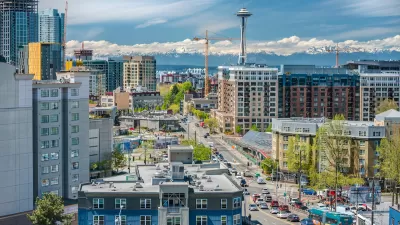'It stinks,'says Mayor John Hipp of Rutherford, New Jersey, as his town struggles to fulfill its requirements for affordable housing. The planning board has reluctantly agreed to require affordable units in a previously planned redevelopment site.
"Both time and land are running out for Rutherford when it comes to meeting the state's Council on Affordable Housing guidelines. A zoning plan that provides for 114 additional affordable units is due at the COAH office by Dec. 31. And, only about five acres of possibly suitable land remains in Rutherford, west of Route 17.
The requirements are a serious issue, because the state Supreme Court has ruled that municipalities have a constitutional obligation to provide affordable housing opportunities in their zoning plans. The series of rulings, know as the Mount Laurel decisions, were initiated in 1975. COAH was created in 1985 to help municipalities meet the court-established obligation.
If Rutherford doesn't receive COAH approval for its affordable housing plan, it faces a gamut of legal consequences.
'The affordable housing card is often one that's played by developers who are disgruntled,' said Fred Heyer from Heyer, Gruel & Associates, the borough's planning firm. 'Even really terrible things get approved by the courts as a result of non-compliance.'"
FULL STORY: COAH obligation opens door to housing at Highland Cross

Trump Administration Could Effectively End Housing Voucher Program
Federal officials are eyeing major cuts to the Section 8 program that helps millions of low-income households pay rent.

Planetizen Federal Action Tracker
A weekly monitor of how Trump’s orders and actions are impacting planners and planning in America.

Ken Jennings Launches Transit Web Series
The Jeopardy champ wants you to ride public transit.

How Project Connect Would Change ‘The Drag’
A popular — and sometimes deadly — Austin road will exchange car lanes for light rail.

Milwaukee Road to Get Complete Streets Upgrades
The city will reduce vehicle lanes and build a protected multi-use trail including bioswales and other water retention features on its ‘secret highway.’

Tackling Soil Contamination With Nature-Based Solutions
Los Angeles County residents and experts are turning to nature-based methods like bioremediation to address long-standing and fire-exacerbated soil contamination without resorting to costly and disruptive removal.
Urban Design for Planners 1: Software Tools
This six-course series explores essential urban design concepts using open source software and equips planners with the tools they need to participate fully in the urban design process.
Planning for Universal Design
Learn the tools for implementing Universal Design in planning regulations.
Ada County Highway District
Clanton & Associates, Inc.
Jessamine County Fiscal Court
Institute for Housing and Urban Development Studies (IHS)
City of Grandview
Harvard GSD Executive Education
Toledo-Lucas County Plan Commissions
Salt Lake City
NYU Wagner Graduate School of Public Service





























